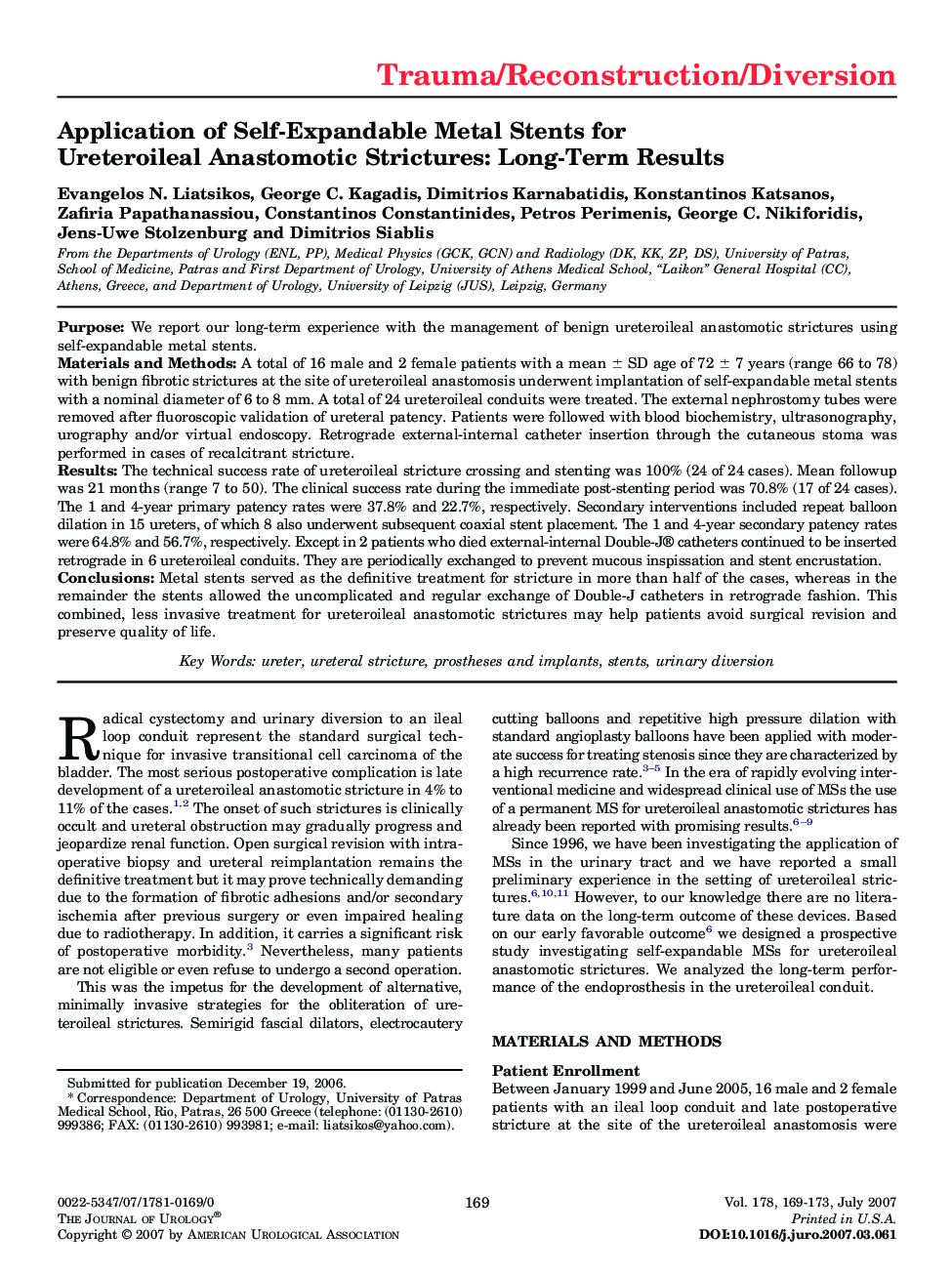| کد مقاله | کد نشریه | سال انتشار | مقاله انگلیسی | نسخه تمام متن |
|---|---|---|---|---|
| 3878520 | 1599007 | 2007 | 5 صفحه PDF | دانلود رایگان |

PurposeWe report our long-term experience with the management of benign ureteroileal anastomotic strictures using self-expandable metal stents.Materials and MethodsA total of 16 male and 2 female patients with a mean ± SD age of 72 ± 7 years (range 66 to 78) with benign fibrotic strictures at the site of ureteroileal anastomosis underwent implantation of self-expandable metal stents with a nominal diameter of 6 to 8 mm. A total of 24 ureteroileal conduits were treated. The external nephrostomy tubes were removed after fluoroscopic validation of ureteral patency. Patients were followed with blood biochemistry, ultrasonography, urography and/or virtual endoscopy. Retrograde external-internal catheter insertion through the cutaneous stoma was performed in cases of recalcitrant stricture.ResultsThe technical success rate of ureteroileal stricture crossing and stenting was 100% (24 of 24 cases). Mean followup was 21 months (range 7 to 50). The clinical success rate during the immediate post-stenting period was 70.8% (17 of 24 cases). The 1 and 4-year primary patency rates were 37.8% and 22.7%, respectively. Secondary interventions included repeat balloon dilation in 15 ureters, of which 8 also underwent subsequent coaxial stent placement. The 1 and 4-year secondary patency rates were 64.8% and 56.7%, respectively. Except in 2 patients who died external-internal Double-J® catheters continued to be inserted retrograde in 6 ureteroileal conduits. They are periodically exchanged to prevent mucous inspissation and stent encrustation.ConclusionsMetal stents served as the definitive treatment for stricture in more than half of the cases, whereas in the remainder the stents allowed the uncomplicated and regular exchange of Double-J catheters in retrograde fashion. This combined, less invasive treatment for ureteroileal anastomotic strictures may help patients avoid surgical revision and preserve quality of life.
Journal: The Journal of Urology - Volume 178, Issue 1, July 2007, Pages 169–173